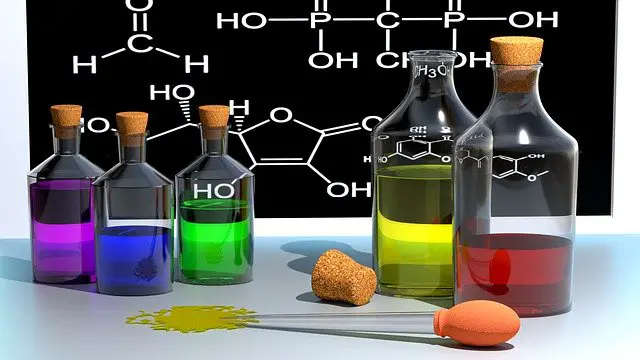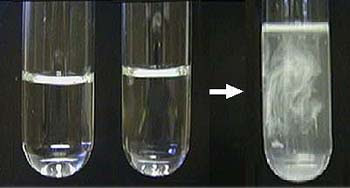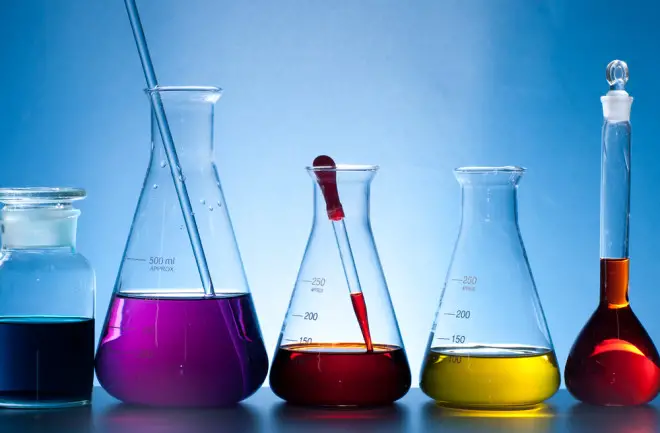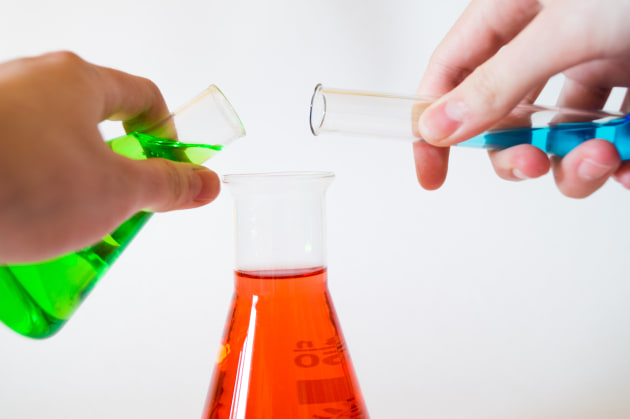In many synthetic chemical processes, reality often doesn’t line up with theory.
Real-world chemical reactions tend to throw up results that differ somewhat from what our nicely written chemical reactions expect.
For example, impurities get in the way to mess up things.
Or the reaction may not run to completion. This leaves stuff behind that hasn’t reacted.
Think of a carbon compound like methane undergoing combustion.
We would expect CO₂ (carbon dioxide) as the product but CO (carbon monoxide) may also turn up, suggesting incomplete reactions.
Actual Yield is the amount of a product that we actually end up producing in a chemical reaction.
It differs from the Theoretical Yield which is what we would expect if all the reactants react.
The Theoretical Yield is based on the amount we believe should be produced based on the balanced chemical reaction. In practice, this doesn’t usually happen.
These complications give rise to the concepts of percent recovery and percent yield.
The two can be easily confused with each other, so let’s look at them closely.
Percent Recovery vs Percent Yield

The percent yield is a way of comparing actual yield and theoretical yield.
The theoretical yield is also known as ideal reaction yield. It represents the maximum amount of product you should get, given the amount of your starting reactants.
In most cases, reactions are performed without the exact amounts of reactants that ensure their complete consumption.
Usually, the theoretical yield is more than the actual yield or is equal to it.
However, if it is more, it means a mistake has been made.
Actual yield can only be known by experiment or in industrial processes.
Percent Recovery is a measure of purity since the chemical samples we use are not usually pure.
It tells us how successful we are in extracting a substance from an impure initial substance.
Percent Yield and Percent Recovery Equations

We can define percent recovery with the following equation:
- Percent Recovery = Mass of pure compound in the impure sample/ total mass of impure sample x 100
The units used for mass can be in grams or other units for mass.
We can write percent yield equation with the following formula:
- Percent Yield = Actual Yield /Theoretical Yield x 100
The Theoretical Yield and Actual Yield are given in moles, grams, or any other suitable units. The choice doesn’t matter as long as you use the same units for both.
Importance of the Percent Yield and Percent Recovery
Percent yield tells you how efficient your reaction is in converting reactants into products. This is important in costly commercial production such as drug production.
It helps to minimize waste. Since many steps are involved in the refinement process with each step costing money, this can add up to great expense at the end. For this reason, drugs tend to be quite expensive.
Percent recovery refers to how much of the original substance you retain after the reaction.
Typically, the reaction itself may cause some change to the substance.
Percent recovery is crucial especially in purification processes like recrystallization where we want to synthesize a pure substance from an impure compound.
Both percent recovery and percent yield may be important but depending on the setting or applications, they don’t always have the same importance.
For example, a paint or fertilizer factory may want to minimize costs. So, they may want to maximize yield while minimizing cost. A little bit of more or less yield can be tolerated as long as it improves profitability.
For medicines or drugs, percent recovery (purity of drugs) may outweigh the importance of yield. This is out of concern for public safety since impurities can be harmful to health.
Worked Examples

Let’s look at two worked examples of percent recovery and percent yield to understand their difference.
Example 1
Pure iron of mass 45.7g was formed after reacting iron oxide with an impure aluminum of mass 24.0 g. Find the percentage recovery of the impure aluminum.
The balanced equation is: 3Fe₃O₄ + 8Al ⇾ 4Al₂O₃ + 9 Fe
Steps:
- Start with the pure, known iron compound (Fe) and calculate its number of moles.
- From the equation, calculate the number of Al moles you would have required. Then convert this into mass.
- Apply the formula and work out the percent recovery.
(Molar masses: Fe =55.85, Al =26.98, O=16)
Solution:
Step 1: molar mass of Fe is given as 55.85 g
Therefore 45.7 g of Fe gives mol Fe 45.7g/55.85g = 0.8183 moles
Step 2: number of Al moles needed for the reaction:
The molar ratio in the equation of Al to Fe is 8:9
3Fe₃O₄ + 8Al ⇾ 4Al₂O₃ + 9 Fe
Al : Fe
8 : 9
x? : 0.08183
For mol Fe 0.08183, you need to react with an unknown number “x” of Al moles, to be calculated in the ratio of 8:9
Solve: x = 8/9 x 0.8183 = mol Al 0.7272
Change the moles into mass: 0.7272mol x 26.98 g/mol = 19.6 g
Step 3:
Use the result of step 2 and apply the formula:
Percent Recovery = mass of pure compound/ mass of impure compound x 100
19.6/24.0 x 100 = 81.7%
Important points to remember in computing this figure:
- The impure compound (Al) could not be directly converted into moles since it is impure.
This is why we first used Fe for our calculation since it is pure and so can be converted directly into moles.
- After getting the figure of moles from the pure Fe, we use this to work out the value for pure Al that would have been needed for the reaction
Example 2:
We can use the above chemical reaction but this time to work out the percent yield. If we assume that 2.10 g of aluminum oxide was produced when 1.35g of aluminum was used in the reaction, we can find the percent yield of aluminum (percentage of Al converted to aluminum oxide) in the following way.
The balanced equation is: 3Fe₃O₄ + 8Al ⇾ 4Al₂O₃ + 9 Fe
Steps:
- From your known compound, work out the number of Al moles
- Using your equation, find out the number of Aluminum compound (Al₂O₃) moles that would be needed to convert the result of step 1 into mass
- Apply the formula and work out the answer.
(Molar mass Al₂O₃=101.96)
Solution:
Step 1:
The number of Al moles: Since we know Al is pure, we can use it directly to convert into moles.
The molar mass of Al is 26.98g
26.98g of Al = 1 mole
1.35 g of Al = x? moles
Solve: x = 1.35/26.98 = 0.05 moles
Step 2:
The number of moles of Aluminum oxide compound:
In the equation, the molar ratios of Al and Al₂O₃ is 2:1 (after simplification)
3Fe₃O₄ + 8Al ⇾ 4Al₂O₃ + 9 Fe
Al : Al₂O₃
8 : 4
Simplified: 2 : 1
0.05 : x?
Solve: x = 0.05/2 = 0.025 moles of Al₂O₃
Convert result into mass:
The molar mass of Al₂O₃ =101.96 g
1 mole of Al₂O₃ =101.96 g
0.025 mole of Al₂O₃ =x? g
Solve: x = 0.025 x 101.96 = 2.55g (this is also your theoretical yield)
Step 3: Apply the formula for yield
Percent Yield= Actual yield/Theoretical yield x 100
= 2.1/2.55 x 100 = 82.4%
Points to remember from the figure you obtain:
- If this value exceeds 100%, it indicates an error. This could be in calculation or weighing
- Values below 100% are the ideal, though may deviate a bit from the correct value.
- If a chemical reaction is totally completed, (i.e., percent yield= 100%), actual yield would be the same as theoretical yield (a very rare occurrence)
Conclusion
Percent yield and percent recovery can look deceptively similar. Both are ratios that are expressed in percentages.
Both also help us to grapple more realistically with lab or industrial settings where reality often busts expectations or theory.
Focusing on yield and recovery requires us to strike a balance between them, depending on what your goal is.

